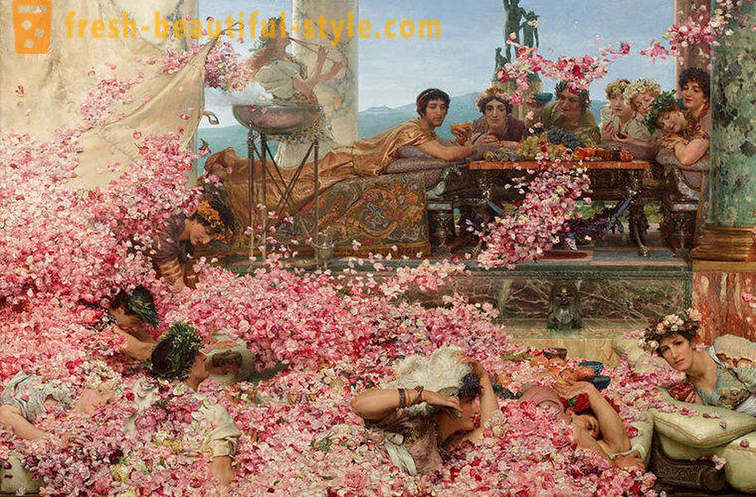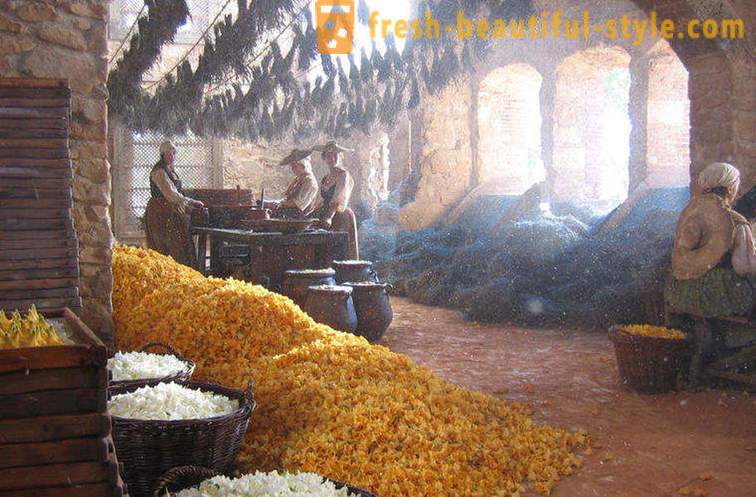The history of perfume
• The history of perfume
Who was the first perfumer to whom the ancient Egyptians brought in the smell of the sacrifice of a virgin, and there really?

The word "perfume" comes from the Latin per fumum and means "through smoke". But she perfumes come, apparently, from ancient Egypt and Mesopotamia. Then incense used for religious purposes: for ablution during prayer, rubbing the victim before offering it to the gods (in spite of the fact that in ancient Egypt the cat was a sacred animal, the sacrifice could be brought kittens and even bulls and calves - very light color) washing the bodies of the dead nobles (the smell of myrrh was felt when the tomb of Tutankhamun was uncovered). Even then we enjoyed the flavors and to induce erotic arousal. Luxury that could afford only the chosen - grams of myrrh was worth as much as a gram of gold dust.

Egyptian priestess identified scents of incense, myrrh, cedar and cypress with the divine, healing, protection from enemies and masculinity. Vessels with these spices installed in the temple with the orientation of the four cardinal directions.
Basically Incense was prepared by direct pressing and pomace special "laboratories". Mere mortals access to the recipes were not, but, fortunately for posterity, recipes sometimes applied to the walls of laboratories, and even with pictures of the process. This recipe is engraved on one of the walls of the temple of Horus in the Egyptian city of Edfu. incense described in it is called "kifi" (translated from the ancient Egyptian - "female breast"). It is known that it consisted calamus, cinnamon, frankincense, mastic, myrrh, juniper, nutsedge, pistachios, henna, saffron and others. The first perfumer (as well as a chemist), whose name is preserved history, was probably female - Tapputi. This name is mentioned in the Mesopotamian cuneiform tablets of the II millennium BC. e. She was a caretaker of the palace and engaged in grinding colors, mixing them with different aromatic oils. Traditions of Egyptian and Mesopotamian aromamasterov migrated in ancient Greece and Rome (and later enjoyed success in the medieval "unwashed" Europe). By adding all spirits steel that smells: almond oil, conifer resin, bergamot, myrtle. About the same time, scientists have learned, literally smelling perfumes that are still considered to be the oldest in the world: they are 4,000 years old, and they were found in Cyprus. The incense and spices were added - such as coriander. In addition to Europe, it is practiced in ancient India and Japan, especially appreciated the flavors of cinnamon and anise.

Incense obtained by distillation - liquid conversion into steam, and then into a liquid - learned how to make the famous Persian physician and chemist Avicenna (this is one way of getting spirits today). He received "rose water" was so gentle and fragrance - so thin that spirits instantly become popular, and studies "the prince of physicians" (so-called Avicenna) influenced not only perfumes but also on the development of chemistry in general.
But the truly modern spirits (with the addition of alcohol) were manufactured for the Hungarian Queen Elizabeth in 1370. They quickly gained popularity, in Europe they were called - "Hungarian water". Then the art of perfumery has moved to Italy, and in the XVI century - and in France, "fragrant" center of the world today.
Interesting facts:
In modern average perfume is added from 15 to 60 of various fragrant substances. Bouquet of 10-25% by weight of perfume, and some up to 50%.
In 2006, the French trading house Galeries Lafayette has released a collection of perfumes created based on the famous novel by Patrick Suskind, "Perfume". Among the 15 small vials is "the smell of the Virgin" from the eighth chapter of the novel, or, for example, "the smell of the XVIII century in Paris" - from the seventh.
According to one version, the spirits "Red Moscow" were created in the image of the fragrance 'favorite bouquet Empress ", which in 1913 came up for Maria Feodorovna son of a French soap-boiler August Michel. Less popular version says that the "Red Moscow" created in 1920 with the participation of Polina Zhemchuzhina.













































